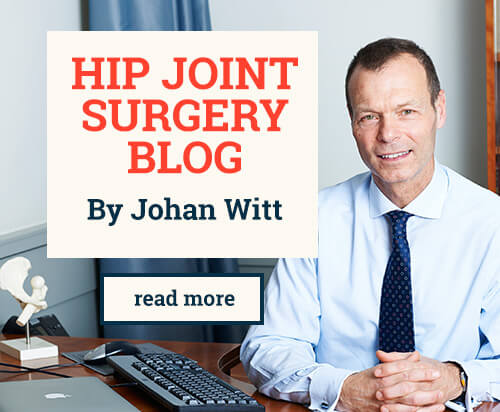Hip Preservation or Hip Replacement?
July 16, 2023
Some hip preservation techniques are associated with a relatively long recovery. In particular the periacetabular osteotomy (PAO) used to re-orientate the acetabulum to treat hip dysplasia, does require quite a long period on crutches afterwards while the bone heals. Even hip arthroscopy can take several months to recover from and get back to sports and exercise.
So why not just have a hip replacement?
This is a question often asked. Recovery after hip replacement is relatively quick nowadays. Mostly weight bearing is not restricted afterwards and by 6 weeks most people are off crutches doing normal day to day activities. Higher levels of activity including sport and exercise do take a bit longer to get back to. Hip replacement is usually reserved for cases where the articular cartilage of the joint has worn away and there may be bone rubbing on bone. The outcome in these circumstances is usually excellent in terms of pain relief and much improved function.
The situation in cases where hip preservation is being considered is rather different, in that there is still a good cartilage surface in the joint although there may be some subtle signs of early damage, but on an x-ray there would not be any significant signs of osteoarthritis. There is now accumulating data which shows that people who undergo hip replacement for painful hips without significant signs of osteoarthritis may not get such a good outcome in terms of pain relief and improved function as those patients who undergo this procedure and who have bone on bone arthritis.
We recently completed out own study at UCLH in a group of young patients who have undergone hip replacements for painful hips but with minimal signs of arthritis on Xray. This also showed that they tended not to get such good functional outcomes as patients with more severe arthritis. That is not to say that they did not get any improvement in terms of their pain but that overall this tended to be not as effective as when the replacement is done in the setting of more severe arthritis.
I think the message clearly is that we should be pursuing techniques of hip preservation where these options carry a good chance of success and hip replacement should be reserved for when the joint becomes significantly arthritic.
Unfortunately there are occasions where for one reason or another hip preservation surgery may not be appropriate or has failed and the hip is painful but without significant arthritis. In these circumstances a hip replacement may be the only option to help reduce pain. In this situation it may well be appropriate to go down the route of a hip replacement accepting that pain is likely to be improved but the hip may not be completely pain free and the level of improvement may not be as good as in those cases where more severe arthritis has developed.




Speak Your Mind